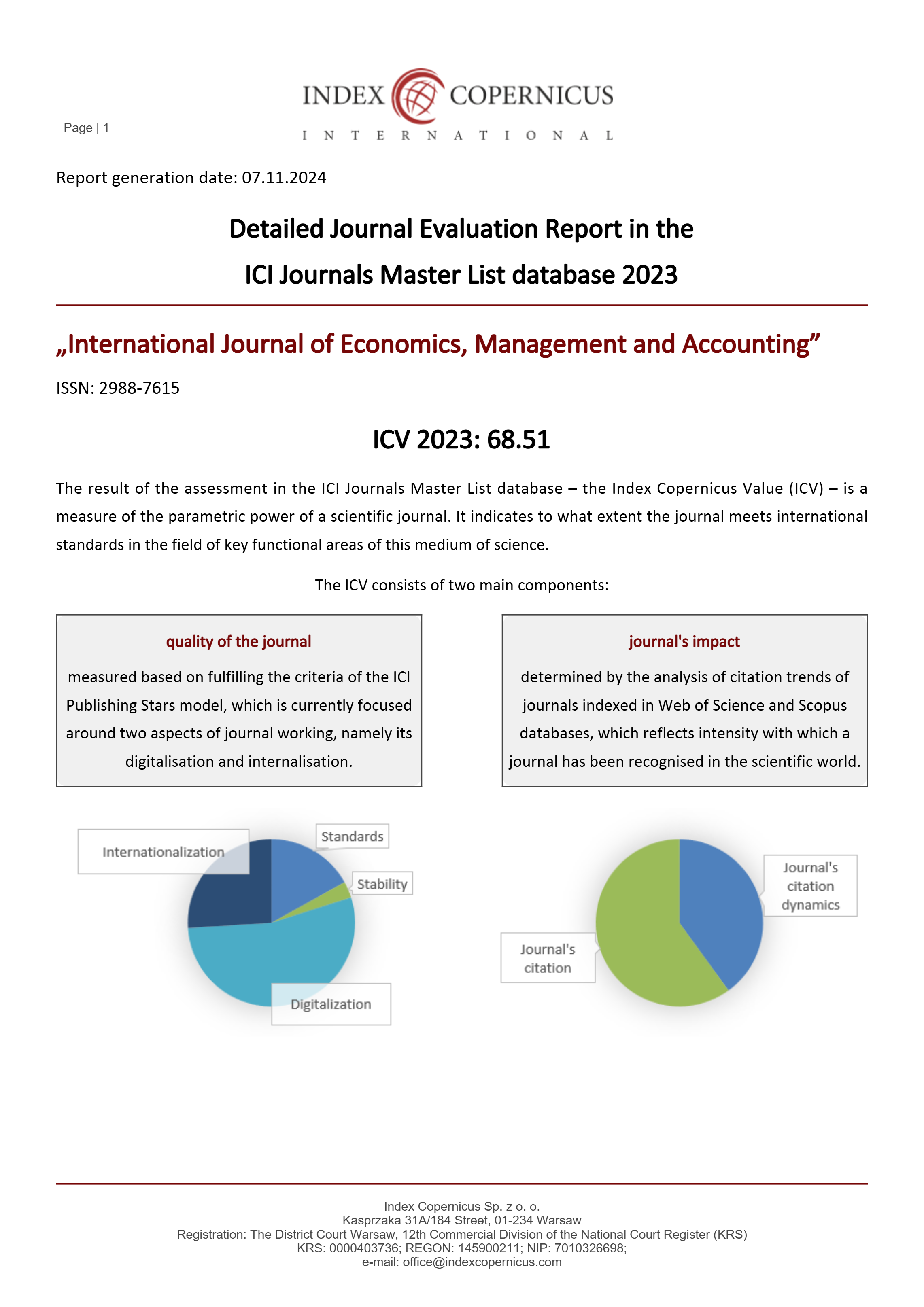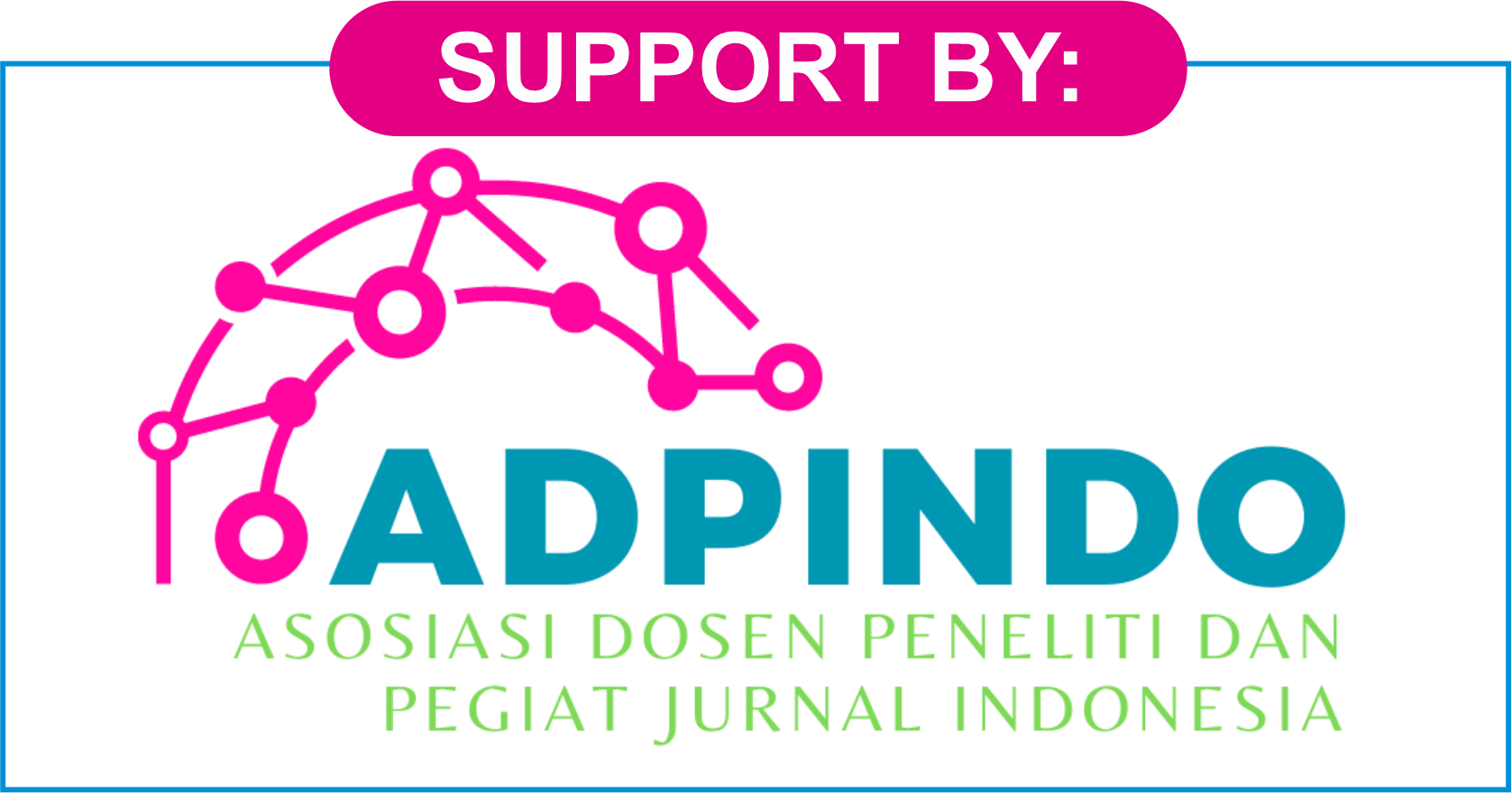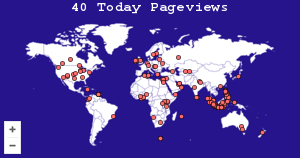The Influence of Transformational Leadership on Performance Through Motivation and Job Satisfaction for Teachers at Yayasan Pendidikan Al-Istiqomah Karya Guna Kebumen
DOI:
https://doi.org/10.47353/ijema.v1i12.124Keywords:
transformational leadership, motivation, job satisfaction, performanceAbstract
In facing complex global dynamism, a dynamic organization must be able to overcome real challenges from all aspects to produce superior and competitive performance. This research aims to determine the influence of transformational leadership on the performance of teachers at Yayasan Pendidikan Al-Istiqomah Karya Guna Kebumen through motivation and job satisfaction as intervening variables. Data collection techniques using questionnaires, observation and literature study. This type of research is quantitative research and data analysis is carried out using Partial Least Square with SmartPLS 4.0 software. The results of this research show; 1. Transformational Leadership has a positive and significant effect on motivation directly, 2. Transformational Leadership has a positive and significant effect on job satisfaction directly, 3. Transformational leadership has a negative and insignificant effect on performance, 4. Motivation has a negative and insignificant effect on performance, 5. Job satisfaction has a positive and significant effect on performance directly, 6. Transformational leadership has a negative and insignificant effect on performance which is mediated through motivation, 7. Transformational leadership has a positive and significant effect on performance which is mediated through job satisfaction.
Downloads
References
Anjani, A., Ratnamulyani, I. A., & Kusumadinata, A. A. (2018). Penggunaan Media Komunikasi Whatsapp Terhadap Efektivitas Kinerja Karyawan. Jurnal Komunikatio, 4(1). https://doi.org/10.30997/jk.v4i1.1211
Avolio, B. J., & Bass, B. M. (2004). Multifactor leadership questionnaire (TM). Mind Garden, Inc. Menlo Park, CA.
Babbie, E. R. (2020). The practice of social research. Cengage AU.
Bass, B. M., & Riggio, R. E. (2006). Transformational leadership.
Colquitt, J. A., Lepine, J. A., & Wesson, M. J. (2015). Organizational Behavior: Improving Performance and Commitment. New York: McGraw Hill Education.
Dion, C., & Wasim, S. C. (2021). Leadership in Times of Uncertainty, Dynamics, and Complexity. Luleå University of Technology.
Fahmi, I. (2021). Faktor-Faktor Yang Mempengaruhi Kinerja Karyawan: Motivasi, Gaya Kepemimpinan, Kepuasan Kerja Dan Organisasi Budaya (Studi Literatur Manajemen Sumber Daya). Jurnal Ekonomi Manajemen Sistem Informasi, 3(1), 52–67. https://doi.org/10.31933/jemsi.v3i1.677
Firmansyah, D., & Hidayat, R. (2023). Pengaruh Gaya Kepemimpinan dan Motivasi terhadap Kepuasan Kerja terhadap Kinerja Karyawan PT. Syntronic Indonesia. JIIP - Jurnal Ilmiah Ilmu Pendidikan, 6(3). https://doi.org/10.54371/jiip.v6i3.1710
Gary, D. (2011). Human resource management. Pearson Education India.
Hair Jr, J. F., Hair, J., Sarstedt, M., Ringle, C. M., & Gudergan, S. P. (2023). Advanced issues in partial least squares structural equation modeling. saGe publications.
Hair Jr, J. F., Hult, G. T. M., Ringle, C. M., Sarstedt, M., Danks, N. P., & Ray, S. (2021). Partial least squares structural equation modeling (PLS-SEM) using R: A workbook. Springer Nature.
Hair Jr, J. F., Sarstedt, M., Hopkins, L., & Kuppelwieser, V. G. (2014). Partial least squares structural equation modeling (PLS-SEM): An emerging tool in business research. European Business Review, 26(2), 106–121.
Harahap, S. F., & Tirtayasa, S. (2020). Pengaruh Motivasi, Disiplin, Dan Kepuasan Kerja Terhadap Kinerja Karyawan Di PT. Angkasa Pura II (Persero) Kantor Cabang Kualanamu. Maneggio: Jurnal Ilmiah Magister Manajemen, 3(1), 120–135.
Hargreaves, A., & Fullan, M. (2015). Professional capital: Transforming teaching in every school. Teachers College Press.
Henseler, J. (2017). Partial least squares path modeling. Advanced Methods for Modeling Markets, 361–381.
Hidayat, R. (2021). Pengaruh motivasi, kompetensi dan disiplin kerja terhadap kinerja. Widya Cipta: Jurnal Sekretari Dan Manajemen, 5(1), 16–23.
Ilahi, D. K., Mukzam, M. D., & Prasetya, A. (2017). Pengaruh kepuasan kerja terhadap disiplin kerja dan komitmen organisasional. Jurnal Administrasi Bisnis, 44(1).
Juniarti, A. (2021). Faktor-faktor dominan yang mempengaruhi kinerja.
Kock, N. (2015). Common method bias in PLS-SEM: A full collinearity assessment approach. International Journal of E-Collaboration (Ijec), 11(4), 1–10.
Leithwood, K., & Jantzi, D. (2006). Transformational school leadership for large-scale reform: Effects on students, teachers, and their classroom practices. School Effectiveness and School Improvement, 17(2), 201–227.
Mangkunegara, M. A. P., & Hasibuan, M. M. S. P. (2009). 2.2 Manajemen Sumber Daya Manusia.
Murti, H., & Srimulyani, V. A. (2013). Pengaruh motivasi terhadap kinerja pegawai dengan variabel pemediasi kepuasaan kerja pada PDAM Kota Madiun. JRMA (Jurnal Riset Manajemen Dan Akuntansi), 1(1), 10–17.
Northouse, P. G. (2021). Leadership: Theory and practice. Sage publications.
Pasaribu, S. E. (2019). Pengaruh Motivasi, Kompetensi, Dan Lingkungan Kerja Terhadap Kinerja. Maneggio: Jurnal Ilmiah Magister Manajemen, 2(1), 89–103.
Ringle, C. M., Wende, S., & Becker, J.-M. (2015). SmartPLS 3. SmartPLS GmbH, Boenningstedt. Journal of Service Science and Management, 10(3), 32–49.
Rizki, G. N. A. (2023). Pengaruh gaya kepemimpinan transformasional dan motivasi kerja terhadap kinerja karyawan melalui kepuasan kerja pada Perusahaan Ekspedisi J&T Cargo Kota Malang. Universitas Islam Negeri Maulana Malik Ibrahim.
Robbins, S. P., Coulter, M., & DeCenzo, D. A. (2017). Fundamentals of management: Management myths debunked. Pearson.
Robbins, S. P., & Judge, T. A. (2018). Essentials of organizational behavior. Pearson.
Ryan, R. M., & Deci, E. L. (2017). Self-determination theory. Basic Psychological Needs in Motivation, Development, and Wellness.
Sarstedt, M., Hair, J. F., Ringle, C. M., Thiele, K. O., & Gudergan, S. P. (2016). Estimation issues with PLS and CBSEM: Where the bias lies! Journal of Business Research, 69(10), 3998–4010.
Sarstedt, M., Ringle, C. M., & Hair, J. F. (2021). Partial least squares structural equation modeling. In Handbook of market research (pp. 587–632). Springer.
Shmueli, G., Sarstedt, M., Hair, J. F., Cheah, J.-H., Ting, H., Vaithilingam, S., & Ringle, C. M. (2019). Predictive model assessment in PLS-SEM: guidelines for using PLSpredict. European Journal of Marketing, 53(11), 2322–2347.
Suprapta, M., Sintaasih, D. K., & Riana, I. G. (2015). Pengaruh kepemimpinan terhadap kepuasan kerja dan kinerja karyawan (studi pada Wake Bali Art Market Kuta-Bali). E-Jurnal Ekonomi Dan Bisnis Universitas Udayana, 4(6), 430–442.
Syafri, H., Amang, B., & Mas’ud, M. (2023). Pengaruh Kepemimpinan Terhadap Kinerja Karyawan Melalui Motivasi Kerja dan Kepuasan Kerja Pada PT. Griya Kenari Properti Di Makassar. Journal on Education, 5(3), 10147–10164.
Tarjo, T., Burhanuddin, B., & Zulkifli, Z. (2022). Pengaruh Gaya Kepemimpinan Dan Motivasi Kerja Terhadap Kepuasan Kerja Karyawan. Jurnal Administrasi Sosial Dan Humaniora, 4(4), 32. https://doi.org/10.56957/jsr.v4i4.207
Triwahyu, R., Said, M., & Abdullah, T. (2022). Pengaruh Kepemimpinan, Kepuasan Kerja, Dan Motivasi Terhadap Kinerja Karyawan Di Pt. Niaga Nusa Abadi Makassar. Indonesian Journal of Business and Management, 5(1). https://doi.org/10.35965/jbm.v5i1.1864
Vinzi, V. E., Chin, W. W., Henseler, J., & Wang, H. (2010). Handbook of partial least squares (Vol. 201, Issue 0). Springer.
Widodo, S. E. (2023). Manajemen pengembangan sumber daya manusia.
Yukl, G. (1981). Leadership in Organizations, 9/e. Pearson Education India.
Downloads
Published
How to Cite
Issue
Section
License
Copyright (c) 2024 Muhamad Samsul Jamaludin, Corry Yohana, Osly Usman

This work is licensed under a Creative Commons Attribution 4.0 International License.











